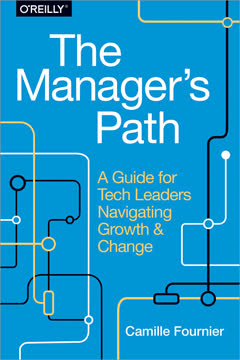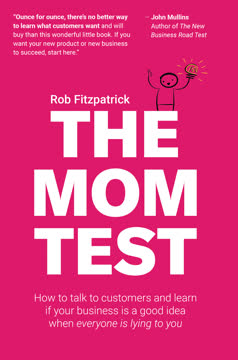Key Takeaways
1. Digital technology is biased towards specific behaviors and outcomes
Digital technologies are biased toward choice, because everything must be expressed in the terms of a discrete, yes-or-no, symbolic language.
Inherent biases. Digital technology is not neutral; it comes with built-in tendencies that shape our interactions and decisions. These biases include favoring choice, immediacy, and abstraction. Understanding these biases allows us to use digital tools more consciously and effectively.
Impacts on society. The biases of digital technology have far-reaching consequences for how we communicate, work, and think. For example, the bias towards choice can lead to decision fatigue, while the bias towards immediacy can erode our ability to think deeply and reflectively. By recognizing these tendencies, we can develop strategies to counteract their negative effects and harness their positive potential.
2. Understand and navigate the "always on" nature of digital life
Instead of becoming empowered and aware, we become frazzled and exhausted.
Constant connectivity. The digital age has ushered in an era of perpetual connection, where we are expected to be available and responsive at all times. This "always on" mentality can lead to stress, burnout, and a diminished ability to focus on important tasks.
Reclaiming control. To combat the negative effects of constant connectivity, we must:
- Set boundaries for device usage
- Create designated "offline" times
- Practice mindful engagement with technology
- Prioritize face-to-face interactions
- Develop strategies for deep work and focused attention
By taking control of our digital habits, we can harness the benefits of connectivity while avoiding its pitfalls.
3. Balance virtual connections with real-world interactions
The digital realm is biased away from the local, and toward dislocation.
Virtual vs. physical presence. Digital technology has expanded our ability to connect with people across vast distances, but it has also led to a devaluation of local, face-to-face interactions. This shift can result in a sense of disconnection from our immediate surroundings and communities.
Striking a balance. To maintain healthy relationships and a strong sense of place:
- Prioritize in-person interactions when possible
- Use digital tools to enhance, not replace, local connections
- Engage in community activities and events
- Practice mindfulness and presence in physical spaces
- Recognize the unique value of embodied experiences
By consciously balancing our virtual and physical interactions, we can leverage the benefits of digital connectivity while preserving the richness of local, embodied experiences.
4. Recognize the oversimplification of complex issues in digital spaces
The digital realm is biased toward a reduction of complexity.
Reductionist tendencies. Digital platforms often encourage the simplification of nuanced topics into binary choices or sound bites. This can lead to polarization, misunderstanding, and a loss of context in important discussions.
Embracing complexity. To counteract this bias:
- Seek out diverse perspectives and long-form content
- Practice critical thinking and fact-checking
- Engage in thoughtful, nuanced discussions online and offline
- Recognize the limitations of digital representations of complex issues
- Encourage and participate in interdisciplinary approaches to problem-solving
By actively embracing complexity, we can foster more meaningful dialogue and develop more comprehensive solutions to societal challenges.
5. Maintain your identity and accountability in online environments
Be yourself.
Digital anonymity. The internet often allows for anonymous or pseudonymous interactions, which can lead to a disconnect between our online and offline selves. This can result in decreased accountability and a tendency towards more extreme or harmful behavior.
Authentic online presence. To cultivate a responsible and authentic digital presence:
- Use your real name when appropriate
- Take responsibility for your online actions and words
- Develop a consistent online persona that aligns with your offline self
- Recognize the permanence of digital communications
- Foster empathy and understanding in online interactions
By maintaining our identity and accountability online, we can create a more honest, respectful, and constructive digital environment.
6. Embrace the power of openness while respecting intellectual property
Share, don't steal.
Open collaboration. The digital age has enabled unprecedented levels of sharing and collaboration, leading to innovations in open-source software, creative commons licensing, and collaborative knowledge platforms like Wikipedia.
Balancing openness and ownership. To navigate this new landscape:
- Understand and respect different types of intellectual property rights
- Utilize open-source and creative commons resources appropriately
- Contribute to collaborative projects when possible
- Properly attribute and credit others' work
- Support creators through ethical consumption and fair compensation
By embracing openness while respecting intellectual property, we can foster a culture of innovation and creativity that benefits everyone.
7. Learn to program or risk being programmed
If we don't learn to program, we risk being programmed ourselves.
Digital literacy. In an increasingly digital world, understanding how technology works is crucial for maintaining agency and making informed decisions. Programming skills are becoming as fundamental as reading and writing.
Empowerment through code. To thrive in the digital age:
- Learn basic programming concepts and languages
- Understand the logic behind algorithms and data structures
- Explore the ethical implications of technology
- Advocate for computer science education in schools
- Encourage critical thinking about the role of technology in society
By developing programming skills and digital literacy, we can actively shape the technological landscape rather than being passive consumers of it.
</instructions>
Last updated:
FAQ
What's "Program or Be Programmed: Ten Commands for a Digital Age" about?
- Digital Age Challenges: The book explores the challenges and opportunities presented by the digital age, emphasizing the importance of understanding and engaging with digital technologies.
- Ten Commands: It provides ten "commands" or guidelines to help individuals navigate the digital landscape effectively and responsibly.
- Programming vs. Being Programmed: The central theme is the choice between programming digital tools or being passively programmed by them, highlighting the need for active participation in digital culture.
- Cultural and Social Impact: Rushkoff discusses the broader cultural and social implications of digital technologies, urging readers to consider their roles in shaping the future.
Why should I read "Program or Be Programmed"?
- Understanding Digital Biases: The book helps readers understand the inherent biases of digital technologies and how they influence human behavior and society.
- Empowerment through Knowledge: By learning about programming and digital literacy, readers can gain more control over their interactions with technology.
- Cultural Insight: Rushkoff provides insights into how digital technologies are reshaping culture, communication, and personal identity.
- Practical Guidance: The ten commands offer practical advice for living and working in a digital world, making it a valuable resource for anyone navigating modern technology.
What are the key takeaways of "Program or Be Programmed"?
- Be Conscious of Time: Digital technologies can disrupt our sense of time; it's important to manage how and when we engage with them.
- Value Real-World Interactions: Despite the convenience of digital communication, in-person interactions remain crucial for genuine connection.
- Embrace Complexity: Digital tools often oversimplify complex issues; it's vital to recognize and address this reduction.
- Learn to Program: Understanding programming is essential to avoid being passively controlled by technology and to actively shape digital experiences.
How does Douglas Rushkoff define "programming" in the book?
- Beyond Coding: Programming is not just about writing code; it's about understanding how digital systems work and influence us.
- Empowerment Tool: It is a means of gaining control over technology, allowing individuals to shape their digital environments.
- Cultural Literacy: Programming is seen as a form of literacy necessary for participating fully in the digital age.
- Active Participation: Rushkoff emphasizes programming as a way to actively engage with and influence the digital world, rather than being a passive consumer.
What are the "Ten Commands" in "Program or Be Programmed"?
- Time: Do not be always on; manage your digital engagement.
- Place: Live in person; prioritize real-world interactions.
- Choice: You may always choose none of the above; resist forced digital choices.
- Complexity: You are never completely right; embrace complexity and nuance.
- Scale: One size does not fit all; recognize the limits of digital scalability.
- Identity: Be yourself; maintain authenticity online.
- Social: Do not sell your friends; value genuine connections over commercial interests.
- Fact: Tell the truth; prioritize factual communication.
- Openness: Share, don’t steal; respect intellectual property and collaboration.
- Purpose: Program or be programmed; learn to code and understand digital systems.
What does Rushkoff mean by "Program or Be Programmed"?
- Choice of Agency: The phrase emphasizes the choice between actively shaping digital tools or being passively shaped by them.
- Control Over Technology: It highlights the importance of understanding and controlling the technologies we use.
- Cultural Influence: The concept underscores the role of programming in influencing culture and society.
- Empowerment Message: Rushkoff encourages readers to learn programming to gain empowerment and agency in the digital age.
How does "Program or Be Programmed" address the concept of digital identity?
- Anonymity vs. Authenticity: Rushkoff discusses the tension between anonymity and authenticity in digital interactions.
- Accountability: He emphasizes the importance of being accountable for one's words and actions online.
- Identity as Liability: The book explores how digital identity can be a liability, especially when anonymity leads to depersonalized behavior.
- Encouragement to Be Real: Rushkoff encourages readers to maintain their real identities online to foster genuine connections and accountability.
What are the implications of digital technology's bias toward choice, according to Rushkoff?
- Forced Decisions: Digital systems often force users to make choices, even when unnecessary, due to their binary nature.
- Illusion of Freedom: The abundance of choices can create an illusion of freedom while actually limiting true autonomy.
- Consumer Manipulation: Marketers exploit this bias to influence consumer behavior and preferences.
- Resisting Categorization: Rushkoff advises readers to resist unnecessary categorization and embrace the option of choosing none of the above.
How does Rushkoff suggest we handle the complexity of digital information?
- Recognize Oversimplification: Digital tools often oversimplify complex issues, leading to polarized views and misunderstandings.
- Value Context: It's important to seek context and understand the broader picture rather than relying solely on digital summaries.
- Embrace Nuance: Rushkoff encourages embracing complexity and nuance in digital interactions and decision-making.
- Avoid Binary Thinking: He warns against the reductionist nature of digital systems that promote binary thinking and choices.
What does Rushkoff say about the social nature of digital media?
- Inherent Social Bias: Digital media is inherently social, designed to connect people rather than isolate them.
- Monetization Risks: Attempts to monetize social interactions can compromise the integrity of digital networks.
- Value Genuine Connections: Rushkoff emphasizes the importance of valuing genuine human connections over commercial interests.
- Evolutionary Imperative: He suggests that the drive for social connection is an evolutionary imperative, pushing us toward greater collaboration.
What are some of the best quotes from "Program or Be Programmed" and what do they mean?
- "Program, or be programmed." This encapsulates the book's central message about the importance of understanding and engaging with digital technologies.
- "The content is not the message, the contact is." Rushkoff highlights the value of human connection over the content itself in digital interactions.
- "Tell the truth." This command underscores the digital age's bias toward factual communication and the importance of honesty.
- "Be yourself." Rushkoff encourages authenticity and accountability in digital spaces, warning against the depersonalization of online interactions.
How does "Program or Be Programmed" address the issue of digital openness and sharing?
- Bias Toward Sharing: Digital networks are inherently biased toward openness and sharing, reflecting their collaborative origins.
- Distinguishing Sharing from Stealing: Rushkoff emphasizes the importance of understanding the difference between sharing and exploiting others' work.
- Cultural Shift: The book discusses the cultural shift toward openness and the challenges it presents in terms of intellectual property.
- Promoting Ethical Sharing: Rushkoff advocates for ethical sharing practices that respect creators' rights while embracing digital collaboration.
Review Summary
Program or Be Programmed receives mixed reviews. Some praise its insightful analysis of digital technology's impact on society and practical advice for navigating the digital age. Others find it repetitive, obvious, or lacking substance. Many appreciate Rushkoff's examination of technology's biases and his call for digital literacy, including programming skills. Critics argue some analogies are flawed and solutions inadequate. Overall, readers value the book's thought-provoking ideas about our relationship with technology, even if they don't agree with all of Rushkoff's arguments.
Similar Books










Download PDF
Download EPUB
.epub digital book format is ideal for reading ebooks on phones, tablets, and e-readers.






